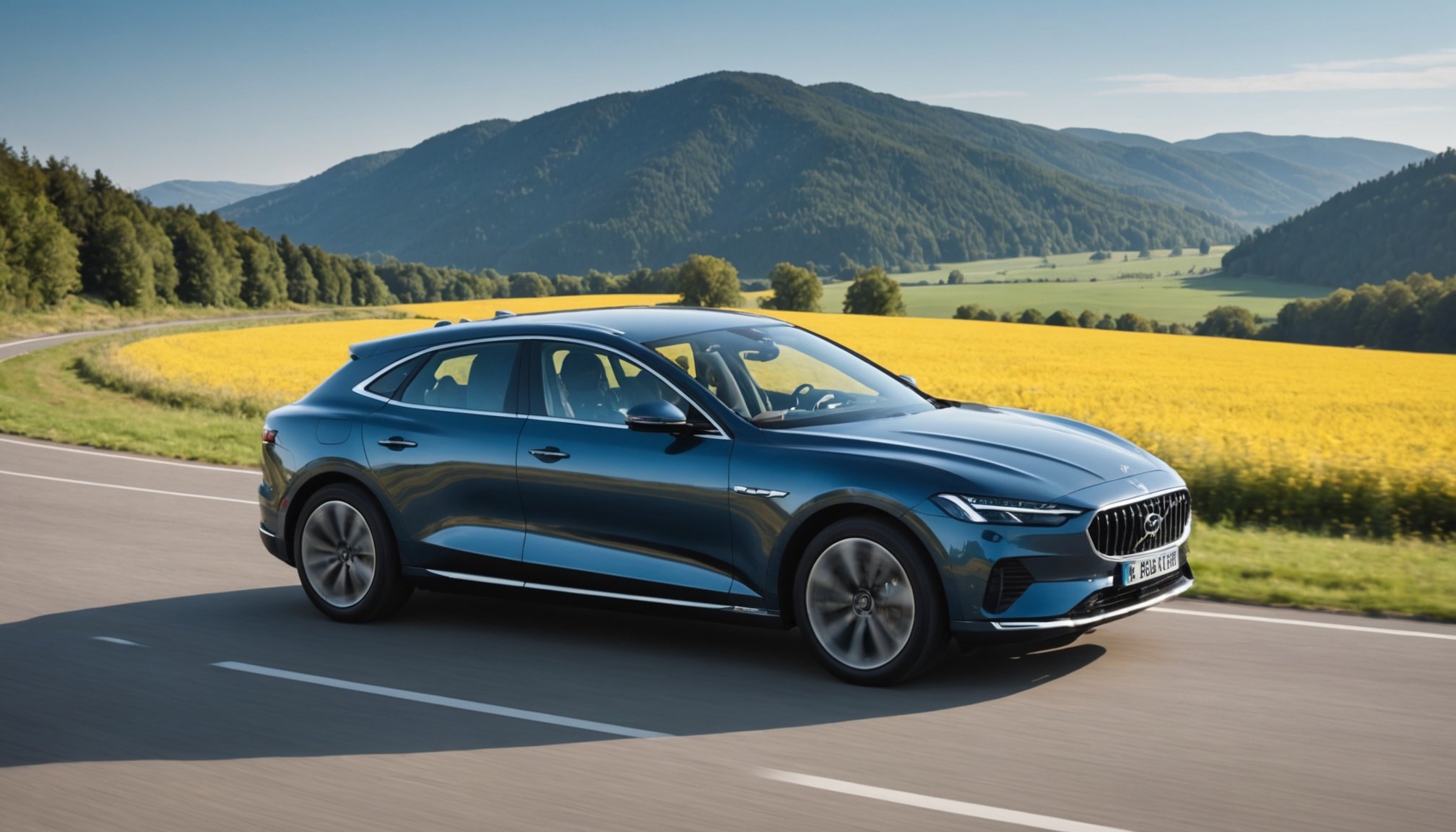In the realm of automotive care, understanding the specifics of your vehicle’s needs is paramount. Among these necessities, the coolant or antifreeze system plays a critical role in maintaining your engine’s overall health. A bit like the lifeblood of your car, the coolant system helps to regulate your engine’s temperature and prevent it from overheating. But do you know what type of coolant to use in a high-mileage car or why it even matters? In this article, we’ll delve deep into the world of automotive coolants, discussing their types, the technology behind them, and their relevance for different vehicles.
Understanding the Role of Coolant in Your Vehicle
Before venturing into the specifics of what type of coolant is best for a high-mileage car, it’s important to grasp the fundamental role of the coolant in your vehicle. The engine is the heart of your car. Like your heart, it works relentlessly, pumping power to the wheels. However, continual operation generates heat. If this heat isn’t effectively managed, your car engine could overheat, leading to component failure.
Also read : What is the procedure for safely replacing a flat tyre at night?
This is where the coolant comes into play. The coolant, also known as antifreeze, is a liquid solution that circulates within your engine to draw off heat and disperse it via the radiator. An efficient coolant will not only help to maintain an optimal operating temperature for your engine but also prevent corrosion and cavitation in the cooling system.
Decoding the Types of Coolant Technology: IAT, OAT, and HOAT
Having established the significance of coolant, let’s delve into the different types of coolants based on technology: Inorganic Additive Technology (IAT), Organic Acid Technology (OAT), and Hybrid Organic Acid Technology (HOAT).
Have you seen this : What is the significance of the Euro NCAP rating for vehicle safety?
Inorganic Additive Technology (IAT)
IAT is the oldest type of coolant technology. It contains inorganic compounds like silicates and phosphates, which act as corrosion inhibitors. These coolants are generally green and have a shorter lifespan, typically needing to be changed every two years or 24,000 miles.
Organic Acid Technology (OAT)
Contrary to IAT, OAT coolants make use of organic acids, also known as carboxylates, to prevent corrosion. These coolants are long-lasting, usually good for up to five years or 50,000 miles. They come in a variety of colors, including orange, red, and yellow.
Hybrid Organic Acid Technology (HOAT)
HOAT coolants are a blend of both IAT and OAT. They contain silicates for quick-acting protection, along with organic acids for long-term defense against corrosion. HOAT coolants are typically orange or yellow and can last up to five years or 50,000 miles.
Identifying the Right Coolant for High-mileage Cars
When it comes to high-mileage cars, the antifreeze you choose can significantly impact the longevity and performance of your engine. Despite the variety, not all coolants are appropriate for older engines which have logged extensive miles.
Typically, most high-mileage cars will benefit from IAT coolants. Given their robust nature and the presence of fast-acting inorganic compounds, they offer excellent protection for older engines. Additionally, they also help keep the seals in the cooling system flexible, a crucial feature for aging vehicles.
While OAT and HOAT coolants offer impressive longevity, they can be too aggressive for high-mileage engines. The organic acid in OAT and HOAT coolants can cause harm to older engine seals and gaskets, leading to leaks and potential damage.
The Role of Water in Your Coolant System
Even though we’ve focused on the type of antifreeze, it’s crucial not to overlook the role of water in your coolant system. Regardless of the antifreeze type you choose, it must be mixed with water to create the final coolant solution. Water is excellent at absorbing and transferring heat, and when combined with antifreeze, it becomes an effective heat transfer medium that also inhibits freezing and corrosion.
In general, a 50/50 mix of antifreeze and water is recommended for most vehicles. However, you may want to adjust the ratio in extreme temperatures. Always refer to the manufacturer’s guidelines for the best results. Please remember, never use tap water, which can contain minerals that cause corrosion. Always use distilled, deionized, or demineralized water.
Ultimately, the choice of coolant for your high-mileage car will depend on several factors including the vehicle’s make, model, year, and current condition. To ensure you choose the right coolant for your vehicle, always consult your vehicle’s owner manual or seek professional advice.
Modern Coolant Technology for High-Mileage Engines: Extended Life and Non-Aqueous Propylene Glycol
Moving forward with our discussion on coolants, let us now explore the more modern types of coolant technologies that have emerged in recent years: Extended Life Coolants (ELC) and Non-Aqueous Propylene Glycol coolants.
Extended-Life Coolants (ELC)
ELCs are an advanced variety of antifreeze coolants that use Organic Acid Technology (OAT) and are often referred to as Dex-Cool. These coolants are designed to last much longer than traditional coolants, extending up to five years or 150,000 miles. This long lifespan is due to the use of carboxylates, organic acids that protect the engine’s metal components from corrosion.
In addition to their longevity, ELCs also offer improved protection for your engine components, reducing the risk of engine coolant cavitation, a common cause of engine damage. Moreover, ELCs also inhibit scale and deposit formation, thus promoting better heat transfer within the engine. However, despite their benefits, ELCs are not generally recommended for high-mileage cars due to their organic acid content that can harm older seals and gaskets.
Non-Aqueous Propylene Glycol Coolants
Unlike other coolants, Non-Aqueous Propylene Glycol coolants do not contain water. Instead, they are composed of 100% propylene glycol, a less toxic alternative to the commonly used ethylene glycol. These coolants provide excellent protection against freezing down to -60 degrees Fahrenheit and boiling up to 250 degrees Fahrenheit.
However, while non-aqueous propylene glycol coolants offer a wealth of benefits, they also come with their own set of drawbacks. Firstly, they are typically more expensive than other coolants. Secondly, due to their non-aqueous nature, they lack water’s excellent heat transfer capabilities. Therefore, they are often not the top choice for high-mileage cars.
Concluding Thoughts: Choosing the Right Coolant for Your High-Mileage Vehicle
When it comes to selecting the right coolant for your high-mileage vehicle, understanding the basics of coolant and its role in the cooling system is just the starting point. It is also essential to decode the various types of coolant technologies available in the market and their suitability for your vehicle.
For most high-mileage vehicles, IAT coolants are often the most suitable. They offer excellent protection against corrosion and help keep the seals in the cooling system flexible, a key feature for aging vehicles. However, always refer to your owner’s manual or seek professional advice before making a final decision.
Remember, the cooling system is critical to your vehicle’s overall health. A well-maintained cooling system can help your high-mileage car engine perform better and last longer. Whether it’s the traditional IAT, the hybrid organic HOAT, the long-lasting Dex-Cool, or the non-aqueous propylene glycol, the right antifreeze coolant can make all the difference in your vehicle’s performance and longevity.
So, let your engine run smoothly, let it breathe, and keep it cool. With the right coolant, your high-mileage car can still have many miles left to travel. And remember, the care you invest in your vehicle today can pay off significantly down the line. So, choose wisely!











